Art in Conflict Zones (Vol. I): Egypt
Artistic Responses to Political Upheaval
A brief introduction to the series
With "Art In Conflict Zones," I seek to navigate the complex and often harrowing landscapes of conflict zones.
This initiative is driven by a pursuit to uncover how artists within these complex and turbulent regions harness their creativity as a potent tool of resistance and memory.
My aim is not to critique the circumstances that gave rise to these conflicts nor to dig into current events. Instead, I focus on understanding, appreciating, and recording the remarkable ways these courageous artists confront their reality.
Through their creativity, hope, and skill, they offer a unique lens into their world, and it is this perspective that I seek to capture and share. My goal with this series is to illuminate the power of art as a means of expression and resilience in the face of adversity.
I aspire to learn and document the lives, works, and societal impacts of these artists, aiming to reveal how art transforms into a ray of hope amidst adversity.
This journey is not just about recording their stories; it’s about understanding the transformative power of art in challenging circumstances, highlighting how creativity can be a source of resilience and inspiration.
The artists I will introduce in this series present a rich mosaic of art forms born out of conflict. These expressions, ranging from street art and music to poetry and digital media, serve as a testament to the artists' lived experiences and their dreams for the future.
Let’s begin.
The Resilient Voices of Egypt
Inji Efflatoun: Painting the Struggle
Born into Cairo's aristocracy in 1924, Inji Efflatoun was much more than an artist; she was a fiery feminist and political activist whose life and work were deeply entwined.
Her artistic journey began under the mentorship of Kamel El-Telmesani, a leading figure in the Egyptian Art and Freedom Group.
Efflatoun was quickly recognized for her unique style, which combined bold colors and vigorous expression with surrealistic and cubist influences. Her early works, such as "La jeune fille et le montre (Girl and Monster)," depicted naked women in tormented landscapes, conveying a bold imagination and a rebellion against her sheltered upbringing.
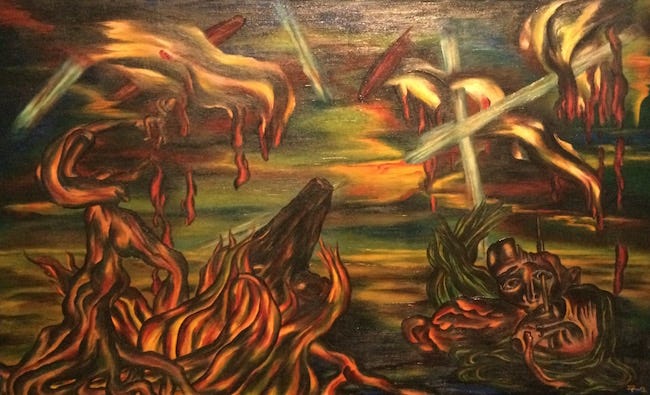
Efflatoun's political engagement intensified when she joined the communist group Iskra and co-founded the League of University and Institutes' Young Women in 1945. She actively participated in the feminist movement, contributing to several political pamphlets and co-founding the La gnat Al-Shabaat with Ceza Nabarawi to reinvigorate the Egyptian Feminist Union.
This engagement with socio-political issues profoundly influenced her artwork, which began to reflect the struggles of the working class, particularly women.
Her first solo show in 1952 captured the spirit of mass protests, with paintings like "Roohy enty Taleka" (Leave, you are free) and "Lan Nansa" (We won’t forget), which were used as posters in demonstrations. Her works from this era resonated with the revolutionary ethos, illustrating women working alongside men and participating in the funeral marches of martyrs.
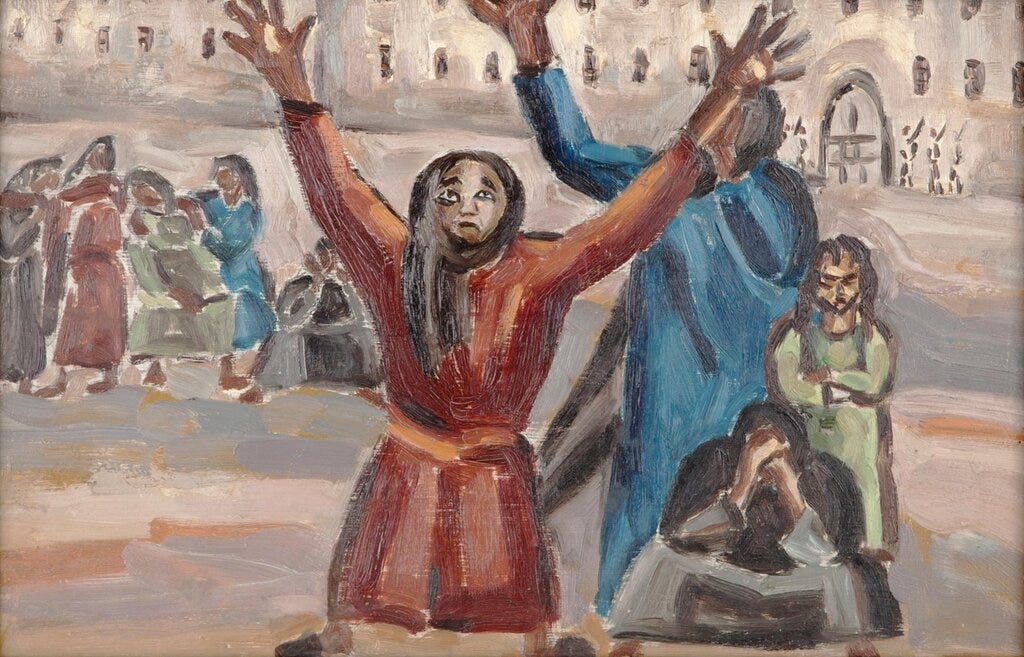
Efflatoun's activism led to her arrest in 1959 during Gamal Abdel Nasser's crackdown on communists. Imprisoned for four and a half years, she continued to paint, producing some of her most compelling works.
Her prison paintings, characterised by expressionistic styles, captured the raw reality of women's plight and reflected her longing for freedom with works like ‘Dreams of the detainee,’ ‘Freedom Tree,’ and ‘Tree of Life’.

Following her release, Efflatoun's style evolved again, becoming more vibrant and hopeful. She began depicting women's daily lives in rural Egypt with a lighter palette and open spaces in her paintings, reminiscent of Van Gogh or Bonnard.
This shift reflected her newfound freedom and a continued commitment to portraying the lives of ordinary Egyptians.
Efflatoun's legacy is profound, leaving an indelible mark on both the art world and the feminist movement in Egypt. Her works have been exhibited worldwide, including prestigious venues like the Venice Biennale and various international exhibitions.
Efflatoun died in April 1989, but her art continues to inspire, symbolizing the power of creativity in the face of adversity and the capacity of art to catalyze social change.
Youssef Chahine: Reflecting Egypt through Cinema
Youssef Chahine, an eminent figure in Egyptian cinema, used his vast array of films to mirror the socio-political climate of Egypt.
Born in 1926 into a well-to-do family in Alexandria, Chahine's early fascination with performing arts took him all the way to California, where he studied theater and television at the Pasadena Playhouse. Returning to Egypt, he embarked on a prolific filmmaking career, beginning with "Baba Amin" in 1950.
His journey paralleled significant historical events, including the Egyptian Revolution of 1952, which saw the rise of leader Gamal Abdel Nasser.
Chahine's body of work spans a variety of genres, from musicals and romantic comedies to film noirs and epic historical dramas, all infused with his unique blend of Hollywood influences and Egyptian cultural elements.
Among his celebrated films, "Cairo Station" (1958), noted for its Italian neorealism influence, stood out for its raw, street-level style and bold social commentary. It was so progressive for its time, especially in its treatment of pre-marital sex, that it faced a ban in Egypt for over a decade.
Other notable works include "The Blazing Sun" (1954), featuring Omar Sharif in his first role, and the rural epic "The Land" (1969), which dug into the struggles of Egyptian farmers against corruption and urbanization.
Chahine's autobiographical film series, which includes "Alexandria... Why?" (1979), "An Egyptian Story" (1982), and "Alexandria Again and Forever" (1989), is particularly significant.
These films offer a deeply personal perspective on his life and insights into Egypt's cultural and political changes.
In these works, Chahine did not shy away from depicting his bisexuality, a bold move for the time. His cinematic style was known for its complexity, fully realizing the intricate social dynamics and relationships in his films.
Chahine's legacy extends beyond his films. He was a recipient of a Lifetime Achievement Award at the 1997 Cannes Film Festival, a testament to his global influence and contribution to cinema. However, his career was not without challenges.
In Egypt, he often faced opposition from Islamic conservatives and struggled against government pressures on the film industry.
Despite these obstacles, Chahine remained committed to his craft, using cinema as a platform to express political opinions and advocate for more love, tolerance, and understanding in the world.
Ganzeer: Street Art as a Voice of Dissent
Mohamad Fahmy, better known as Ganzeer, is a prominent Egyptian artist who gained widespread recognition for his impactful street art during the 2011 Egyptian Revolution.
Born in 1982 in Giza, Egypt, Ganzeer's multifaceted approach to art includes comic books, graphic design, murals, and installations, each medium serving as a conduit for his commentary on immigration, geopolitics, environmental issues, and civic responsibility.
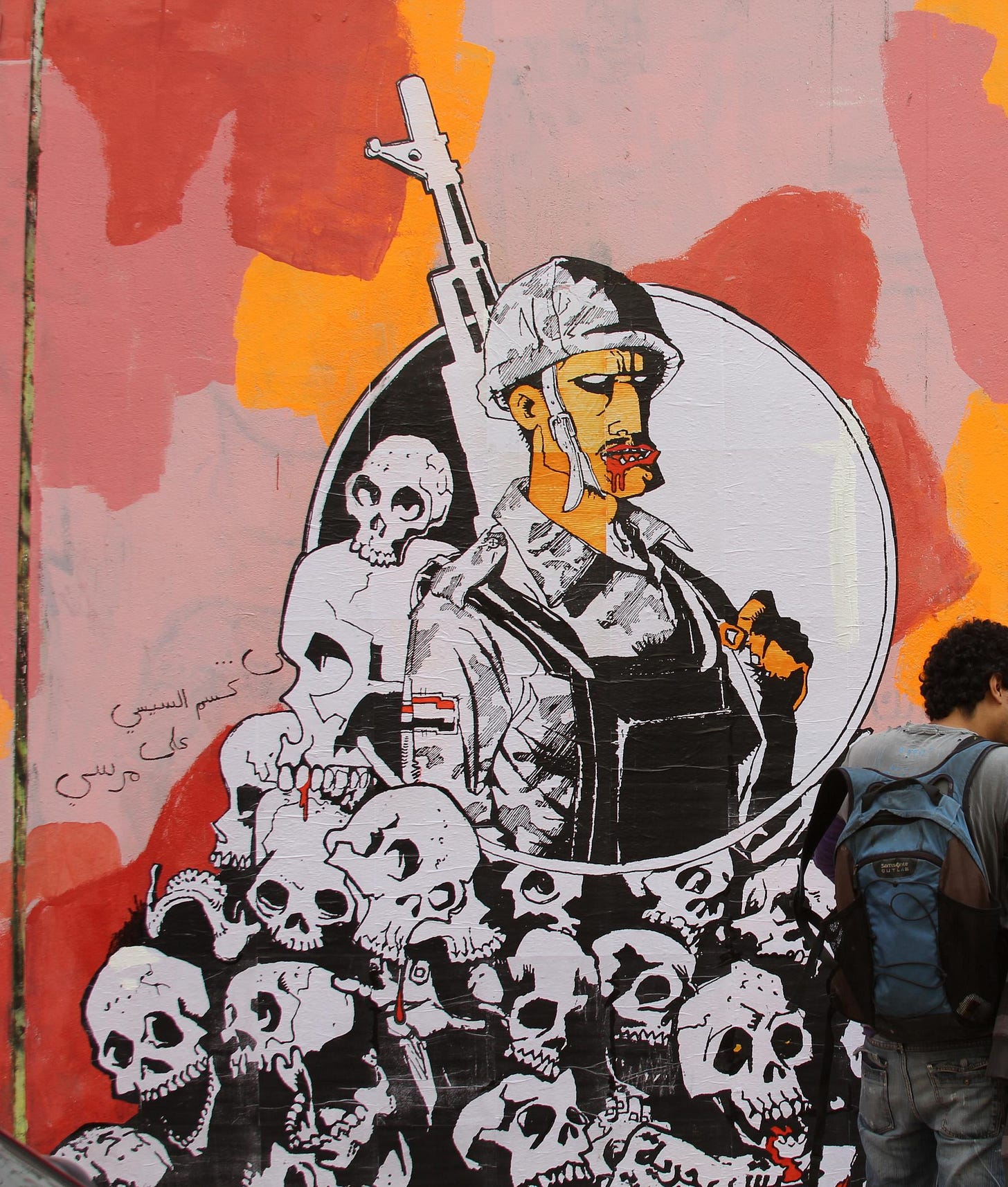
Ganzeer's artistry is marked by a potent visual language that blends art, design, and storytelling. His works, particularly his murals, are known for their bold and provocative nature, often directly challenging oppression and advocating for the rights of the Egyptian people.
His involvement in the Egyptian Revolution was not just an act of artistic expression but also a means of political activism, through which he called out the injustices and violence perpetrated by the ruling authorities.
One of Ganzeer's significant projects includes "The ABC's of Growth" and "The ABC's of Power" at Rice University’s Baker Institute for Public Policy. These murals represent a dual design approach: one set is composed of colorful media layers, and the other adheres to a black and white composition. Both sets echo the institute's mission of bridging the world of ideas and action, with references to cultural and political figures, and symbols reflecting various aspects of Middle Eastern and Mexican cultures, science, and literature.
Ganzeer's artistic journey has been marked by numerous exhibitions and public lectures worldwide. His work has been showcased in renowned institutions such as The Brooklyn Museum in New York, The Palace of the Arts in Cairo, the Greek State Museum in Thessaloniki, the Victoria & Albert Museum in London, and the Edith Russ Haus in Oldenburg. His projects have extended to various forms of media and venues, reflecting his commitment to using art as a tool for social commentary and change.
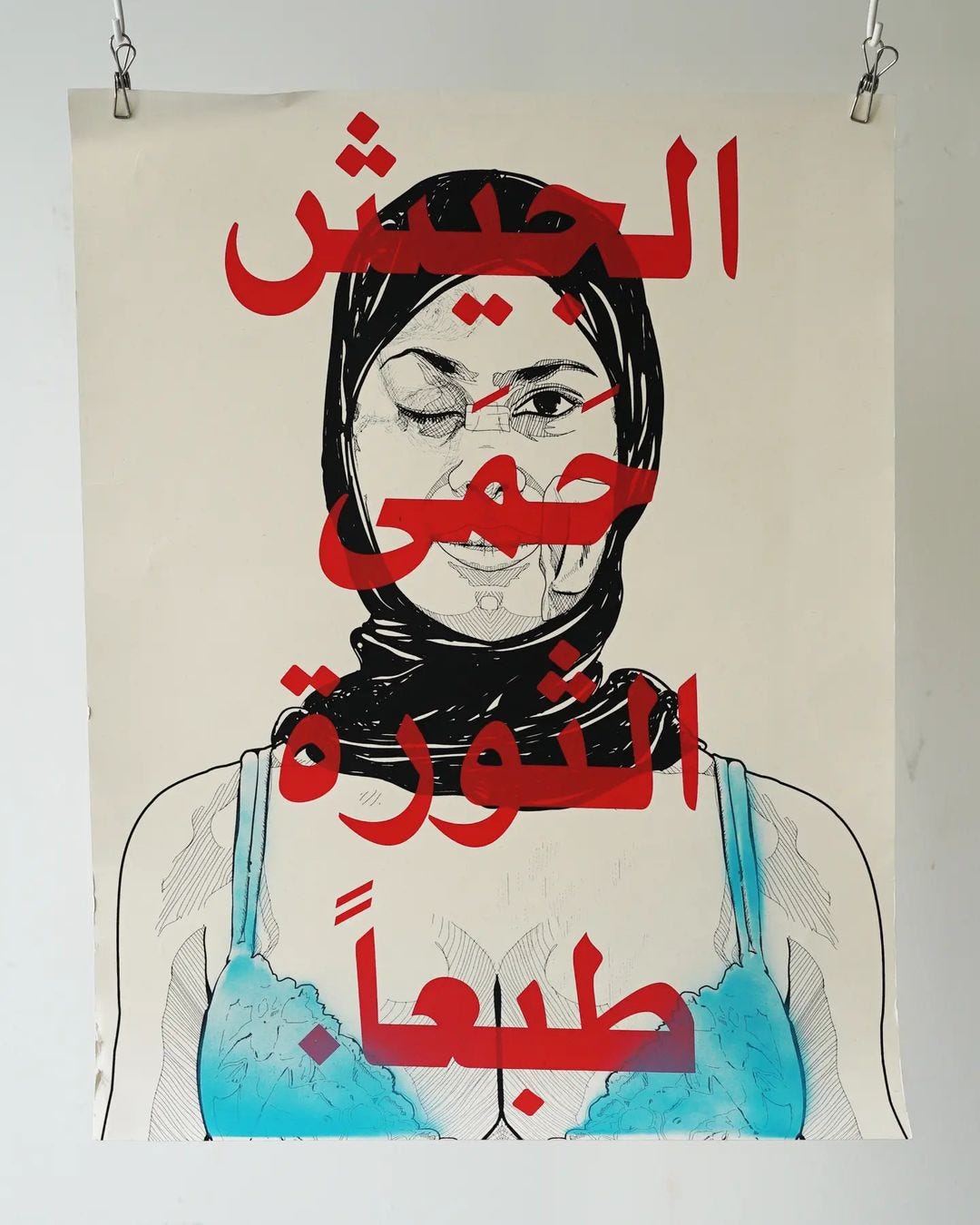
His involvement in political street art in Cairo during the Arab Spring stands as a testament to his belief that artists can propel ideas and drive change. Ganzeer, whose pseudonym means "bicycle chain" in English, sees himself as part of a mechanism that moves ideas forward. His work during this period was not only a reflection of the social and political upheaval in Egypt but also a vehicle for expressing the collective sentiment of the people.
Ganzeer's contributions extend beyond the streets of Cairo. His graphic novel "THE SOLAR GRID" is a science fiction epic exploring themes of race, gender, industrialism, consumerism, and environmental destruction. This project, like much of his work, aims to engage the audience in critical thought and discourse, demonstrating his belief in the power of art to influence and enact social change.
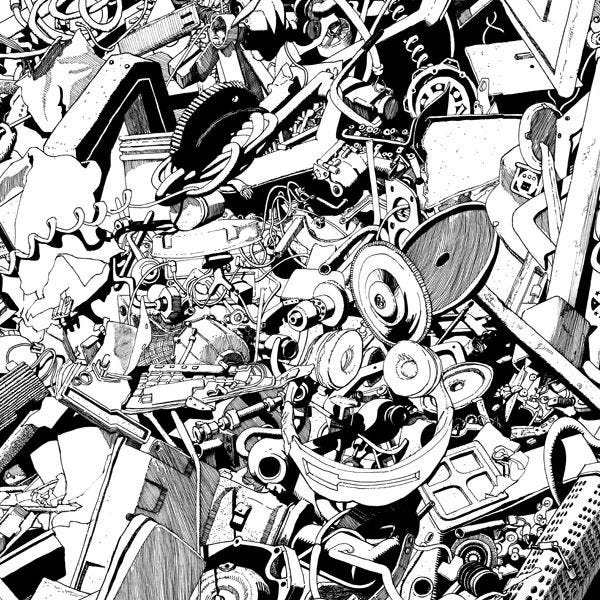
Ganzeer's art continues to resonate globally, bearing witness to the power of street art in political discourse and social transformation. His work is a powerful reminder of the role of art and artists in times of conflict and upheaval, highlighting art's enduring significance as a tool for communication, expression, and change.
The Echoes of Resilience.
Inji Efflatoun, Youssef Chahine, and Ganzeer, each from different artistic disciplines, embody the resilient spirit of Egyptian art in the face of conflict. Their works, deeply rooted in the socio-political context of their times, offer us insights into the struggles and aspirations of a nation in flux. Through their creative expressions, they have not only documented history but have also actively participated in shaping it.
As I continue exploring art in conflict zones, these artists remind me of the power of creativity to confront, reflect, and ultimately transcend the challenges of tumultuous times. Their legacy is hope, inspiring current and future generations to use art as a means of resistance, remembrance, and renewal.
Further reading.
Inji Efflatoun:
Youssef Chahine:
For Ganzeer:
Thank you for reading ‘Rebel Strokes’. This post is public so feel free to share it with family and friends

